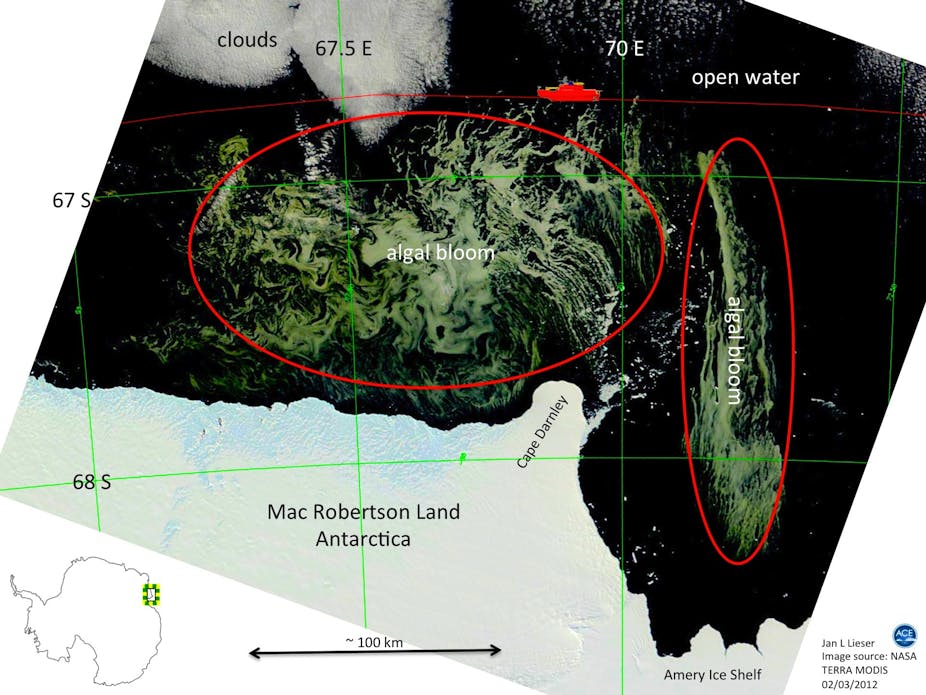A field of green algae stretching hundreds of kilometres across the ocean surface near Antarctica is so bright that it is clearly visible from space, even through thin layers of cloud.
Scientists from the Australian Antarctic Division who have been monitoring the massive bloom for the past fortnight say it is the biggest occurrence of its kind in living memory.
Jan Lieser, a marine glaciologist who monitors the sea ice conditions in the East Antarctic using satellite data for the Antarctic Climate & Ecosystems Cooperative Research Centre in Hobart, Australia, estimated that the bloom covered an area about 200 kilometres east to west, by 100 kilometres north to south.
Dr Lieser has captured several images of the algae using NASA’s Modis instrument on the Terra satellite, at least 650 kilometres above the Earth. He said the giant green field, thought to be phaeocystis algae, was providing “a feast” for krill and other zoo plankton, and also bigger marine life that was drawn to the area to feed on the krill.
“We know that algal blooms are a natural occurrence down south - it’s just a part of the Southern Ocean. But I’ve never seen one on this scale before. It’s been going on for about 15 days now, so it’s maybe about ⅔ or ¾ of the way through the cycle.”
It was unclear what had precipitated the bloom, he said, but it was thought that a combination of nutrients and sunlight was the main cause.
“Iron is the limiting nutrient in that part of the world, so as soon as you have iron and as soon as you have sunlight and all the other conditions are right, then these algal blooms will quite happily grow and reproduce,” Dr Lieser said.
“Where the iron is coming from we’re not quite sure. One idea is that it’s been taken off the continent by strong offshore winds that take snow and sediment load in the snow into the ocean surface, and the snow melts there and releases the nutrient load.”
Another idea was that sediment was being brought up from the ocean floor and releasing nutrients on the surface. The third option was that decaying “fast ice” - or sea ice which has frozen along coasts - had broken off and was feeding the bloom.

